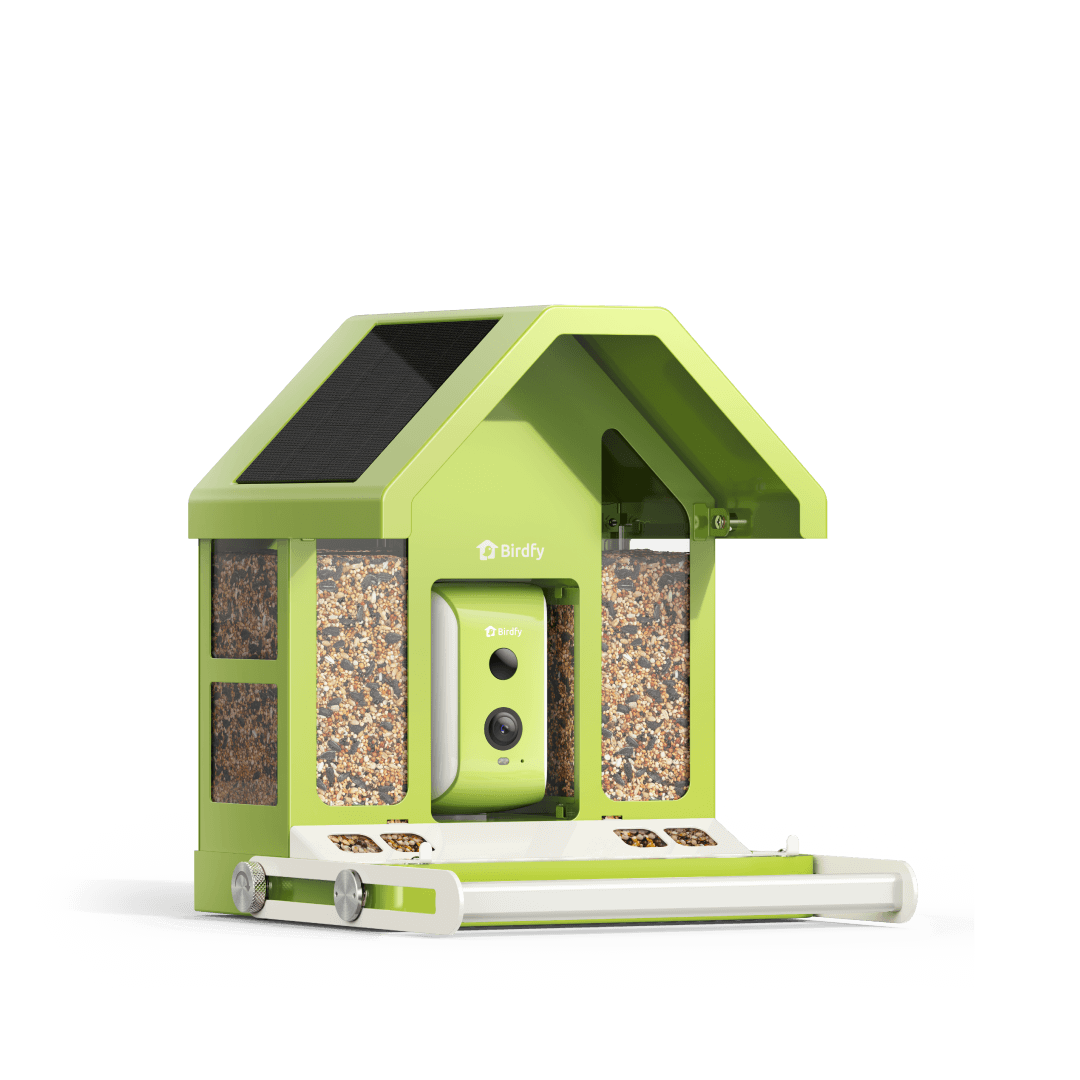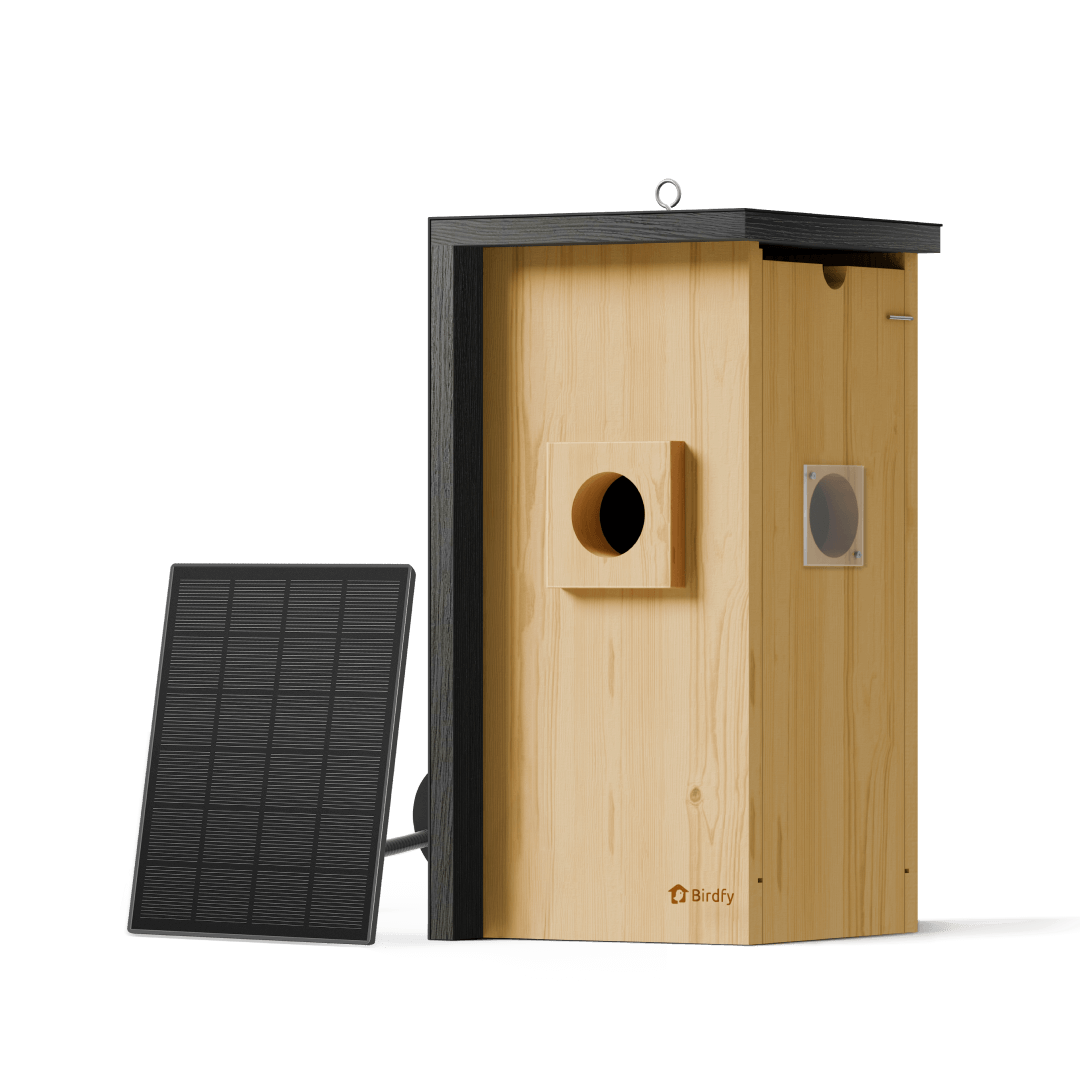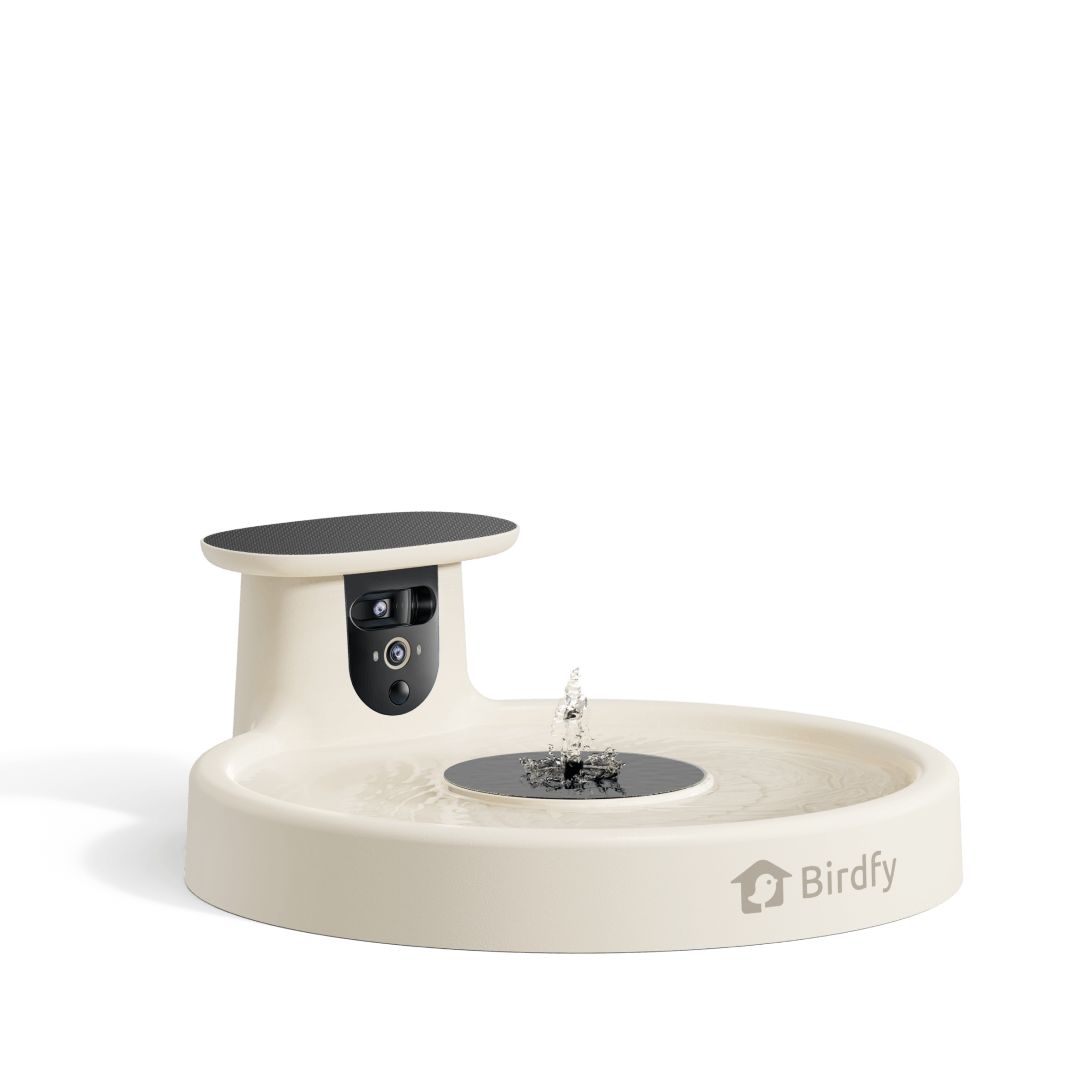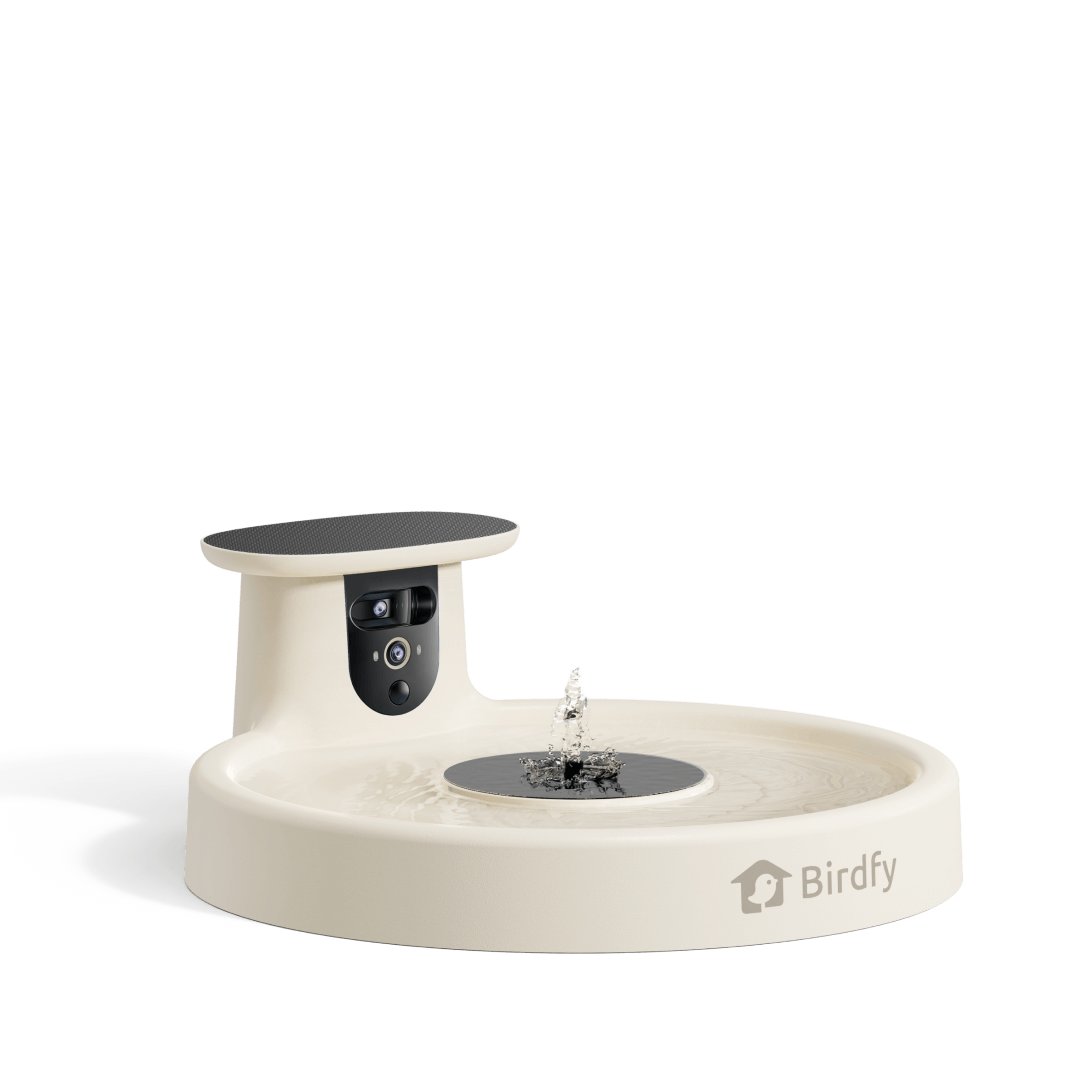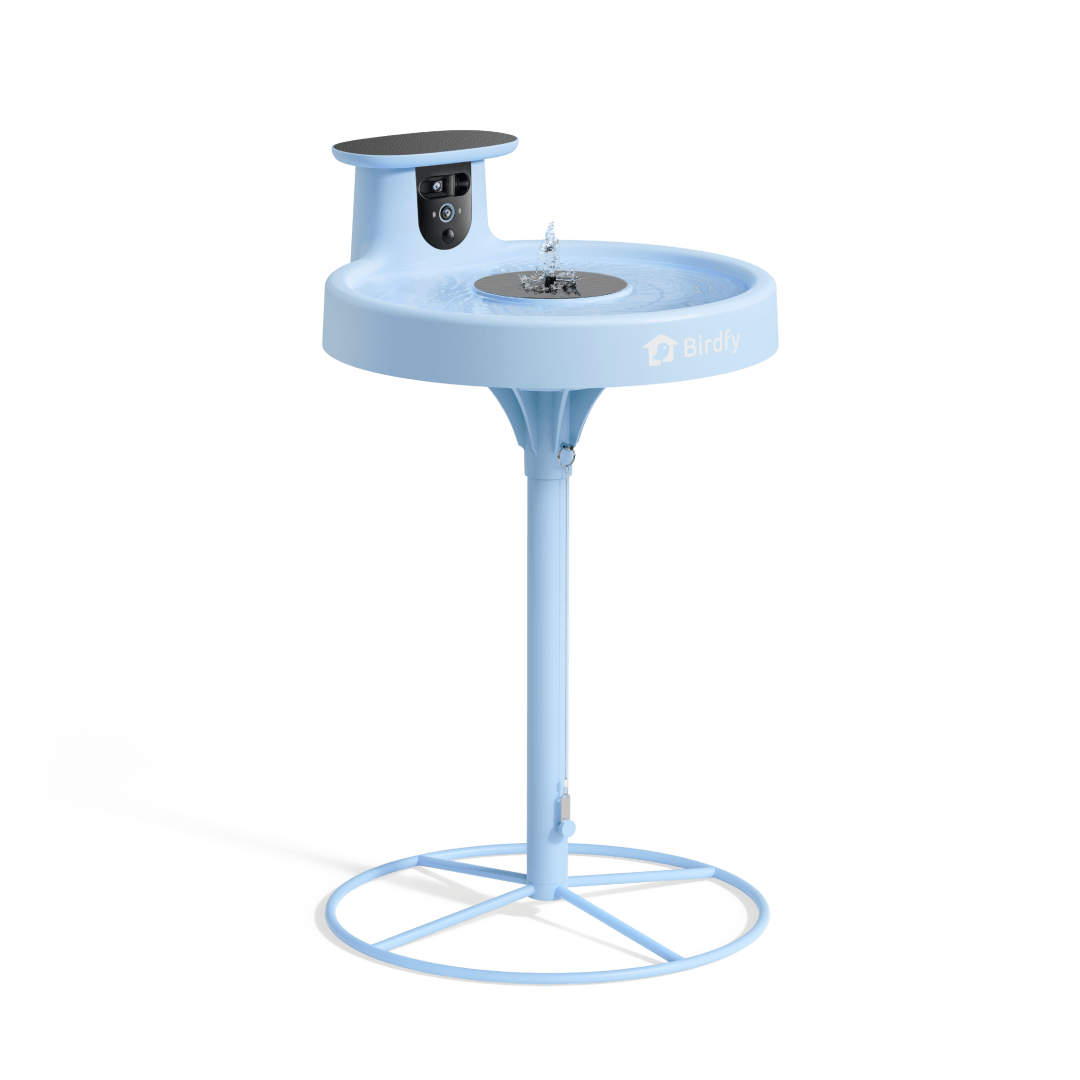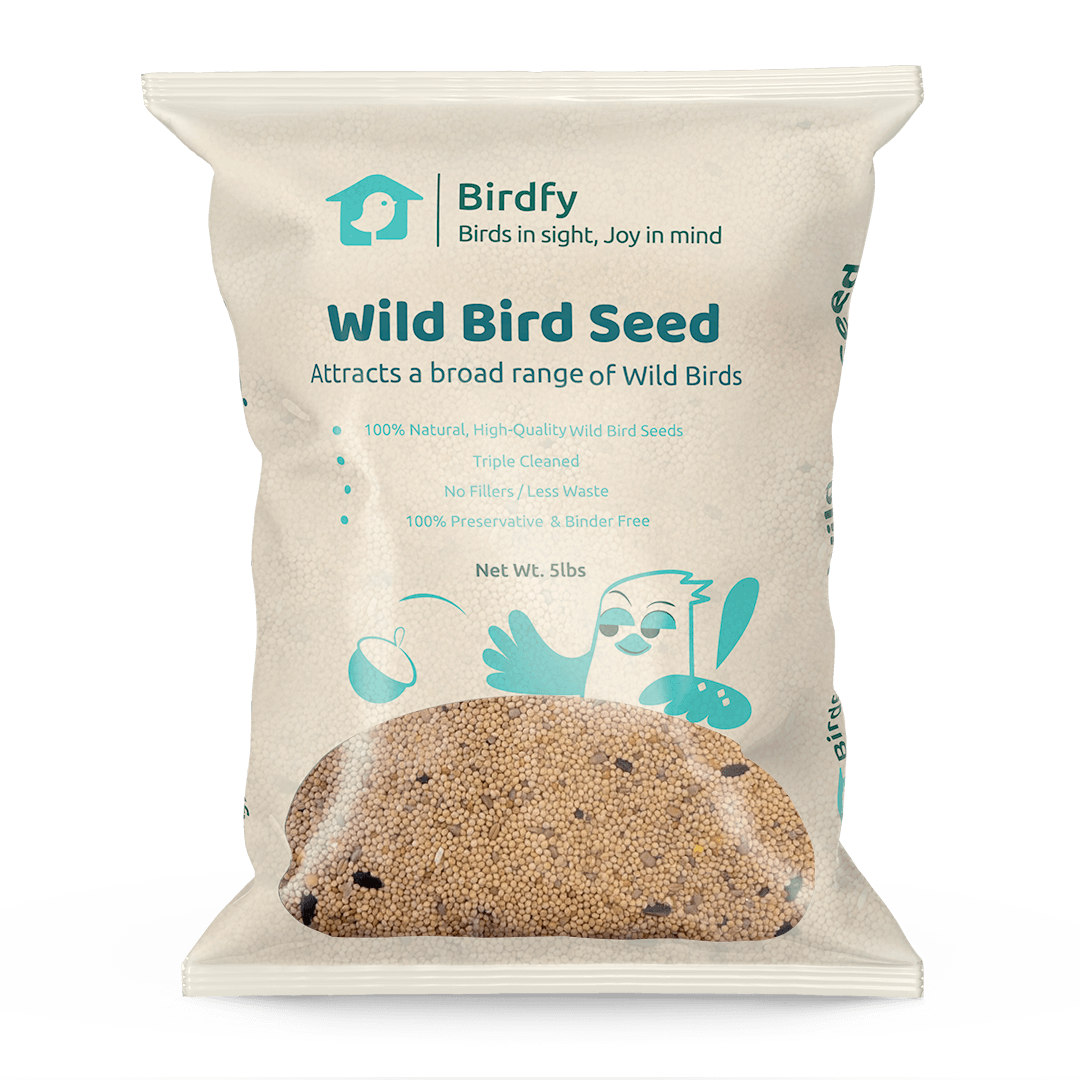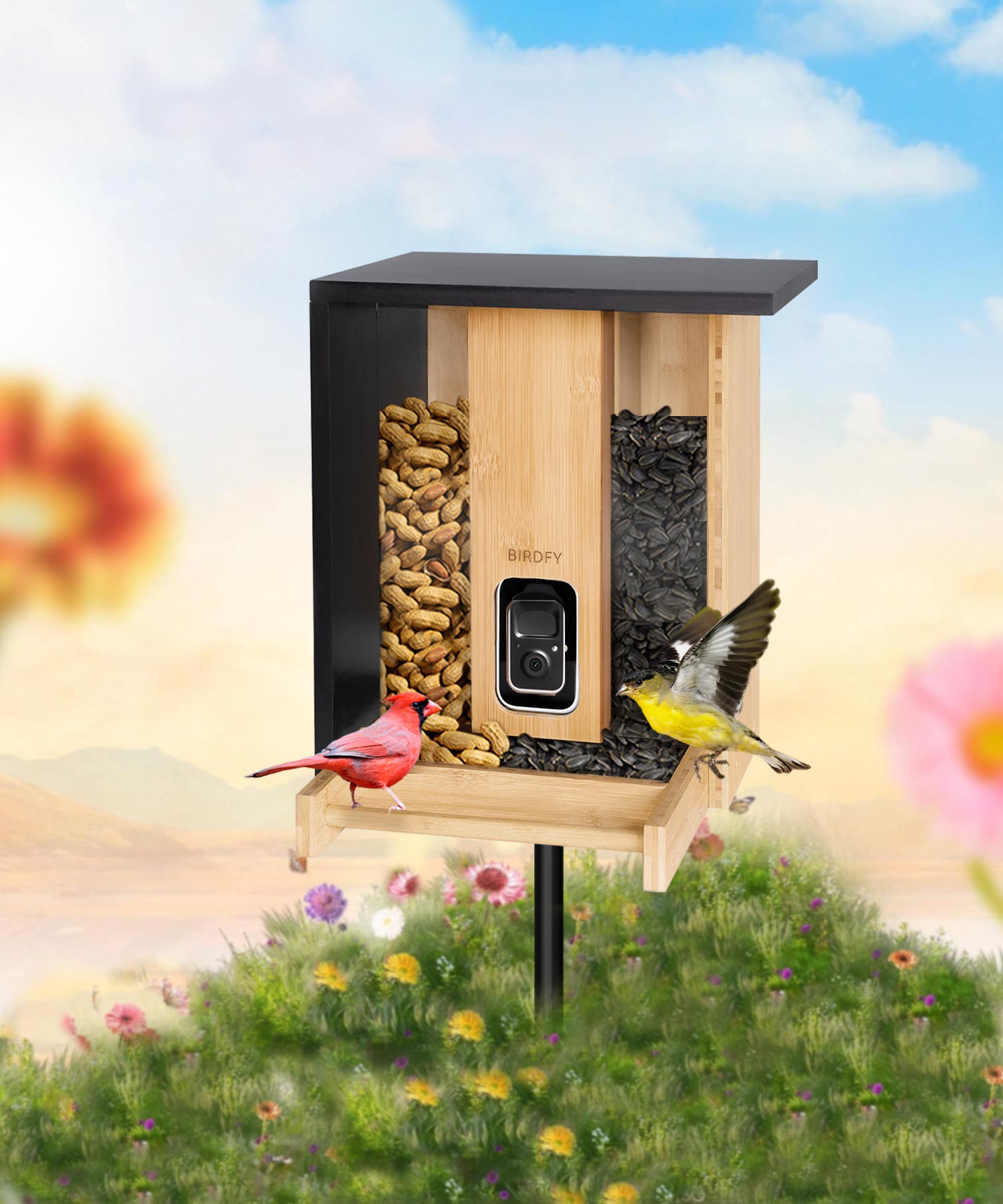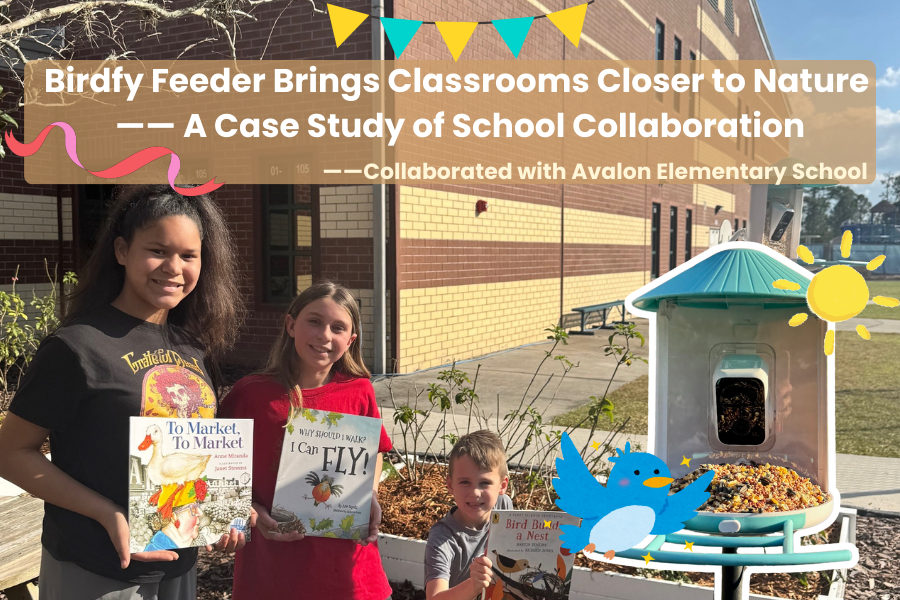In Georgia's diverse bird ecosystem, each sunrise marks the beginning of a symphony of avian melodies, echoing through the verdant landscape. From the awe-inspiring flights of eagles commanding the skies to the gentle hum of hummingbirds flitting among blossoming flowers, every bird contributes to the intricate web of life. Nestled within towering trees, owl families maintain vigilant watch with their wise eyes, while exuberant parrots fill the air with vibrant hues and cheerful chatter. Along meandering streams, herons move with grace, poised for precise strikes, while elusive warblers serenade the forest with their secretive songs from hidden perches. From the canopy to the forest floor, Georgia's avian inhabitants create a mosaic of beauty and fascination, epitomizing the harmonious balance of its thriving ecosystem.
Featured Bird Species
1.Small Birds
American goldfinch
The American Goldfinch (Spinus tristis) emerges as a radiant gem amidst North America's avian tapestry, renowned for its vibrant plumage and cheerful presence. With its striking combination of bright yellow and jet-black wings, this small
songbird captivates observers from coast to coast. Found in a variety of habitats, including fields, meadows, and suburban gardens, the American Goldfinch brings a burst of color to every landscape it inhabits. Renowned for its undulating flight and melodic song, such finch species adds a touch of joy to the natural world, inspiring admiration among birdwatchers and nature enthusiasts alike.
Nestled amidst fields and hedgerows across North America, the American Goldfinch (Spinus tristis) stands out as a beloved symbol of summertime vibrancy and vitality. Dressed in a coat of bright yellow plumage during the breeding season, this charming songbird epitomizes the essence of sunshine and warmth. With its acrobatic flights and sweet, warbling melodies, the American Goldfinch enlivens the air with its presence, bringing a sense of delight to observers of all ages. From feasting on seeds and thistle to nesting in shrubs and trees, this adaptable finch exemplifies the resilience and resourcefulness of avian life in diverse ecosystems.
Carolina wren
The Carolina Wren (Thryothorus ludovicianus) stands as a cherished emblem of the southeastern United States, renowned for its spirited song and endearing presence in gardens, parks, and suburban neighborhoods. With its warm reddish-brown plumage, bold white eyebrow stripe, and distinctive upright posture, this small songbird captures the hearts of birdwatchers and nature enthusiasts across its range. Renowned for its rich, melodious song, often described as a cascade of trills and whistles, the Carolina Wren fills the air with its exuberant melodies throughout the year, adding a touch of musicality to the southern landscape. From foraging for insects amidst leaf litter to nesting in cozy nooks and crannies, this adaptable wren species exemplifies the resilience and resourcefulness of avian life in diverse habitats.
The Carolina Wren (Thryothorus ludovicianus), a diminutive yet charismatic songbird, brings a touch of southern charm to North America's woodlands and urban areas. Adorned in a coat of warm russet tones accented by a bright white eyebrow stripe, this wren species exudes a sense of vibrancy and vitality. With its distinctive song resonating through dense vegetation and city streets alike, the Carolina Wren serves as a vocal ambassador of the southeastern United States. From building intricate nests in shrubs and bushes to serenading its surroundings with its lyrical calls, this adaptable bird thrives in a variety of habitats, embodying the resilience and adaptability of wildlife in the face of changing environments.
Eastern Bluebird
The Eastern Bluebird (Sialia sialis) stands as a beacon of beauty and charm in North America's avian realm. With its resplendent azure plumage accentuated by warm tones of reddish-brown, this small thrush species captivates the hearts of bird enthusiasts across its native range. Renowned for its melodious warbles and gentle demeanor, the Eastern Bluebird symbolizes serenity and hope in the eastern regions of the United States. From open woodlands to suburban landscapes, this beloved bird graces diverse habitats, embodying the delicate balance of nature through its ecological significance and aesthetic allure.
In the woodlands and meadows of eastern North America, the Eastern Bluebird (Sialia sialis) reigns supreme as a symbol of grace and vitality. Adorned in a coat of sky-blue feathers complemented by russet hues on its breast, this thrush species embodies the essence of tranquility and beauty. With its cheerful song filling the air and its elegant flight weaving through the foliage, the Eastern Bluebird holds a special place in the hearts of birdwatchers and nature enthusiasts alike. From foraging for insects to nurturing its young in cozy nest boxes, this iconic bird contributes to the intricate tapestry of life, reminding us of the wonders found within our own backyard habitats.
House Finch
The House Finch (Haemorhous mexicanus) is a familiar and adaptable songbird native to North America, known for its cheery demeanor and melodious warbling. Belonging to the finch family (Fringillidae), this small but charismatic bird is a common sight in urban, suburban, and rural environments across its range. The male House Finch is distinguished by its vibrant red plumage on the head, throat, and breast, while the female exhibits a more subdued brown and streaked appearance. Originally native to the western United States and Mexico, the House Finch has successfully expanded its range across much of North America due to its ability to thrive in various habitats and its readiness to exploit human-altered landscapes.
The House Finch (Haemorhous mexicanus) is a delightful and ubiquitous resident of North America, celebrated for its adaptability, colorful plumage, and cheerful song. Belonging to the diverse family of finches, this small passerine bird boasts a distinctive appearance characterized by its conical bill, streaked underparts, and, in males, striking red coloring on the head, throat, and chest. Originally native to the arid regions of the western United States and Mexico, the House Finch has demonstrated remarkable resilience and flexibility in adapting to diverse environments, ranging from forests and grasslands to suburban neighborhoods and urban parks. Its successful colonization of new territories has endeared it to birdwatchers and backyard enthusiasts alike, making it one of the most familiar and beloved avian species in North America.
Ruby-throated Hummingbird
The Ruby-throated Hummingbird (Archilochus colubris) stands as a jewel among avian species, renowned for its iridescent plumage and astonishing agility in flight. Belonging to the family Trochilidae, this diminutive bird is the only species of hummingbird that breeds in eastern North America, captivating observers with its vibrant green feathers and, in males, a shimmering ruby-red throat patch. As one of the smallest bird species in the world, the Ruby-throated Hummingbird exhibits remarkable aerial acrobatics, capable of hovering mid-air and swiftly darting between flowers to sip nectar with its specialized, elongated bill. Its annual migration from Central America to North America and back, spanning thousands of miles, is a testament to its endurance and navigational prowess, captivating birdwatchers and scientists alike with its astonishing feats.
The Ruby-throated Hummingbird (Archilochus colubris) is a captivating symbol of grace and beauty in the avian kingdom, enchanting observers with its iridescent plumage and rapid wingbeats. As the sole representative of its genus in eastern North America, this diminutive hummingbird captures the imagination with its emerald-green feathers and, in males, a dazzling throat patch that gleams like a precious ruby in the sunlight. Renowned for its extraordinary flight capabilities, including hovering and backward flight, the Ruby-throated Hummingbird is a marvel of nature's engineering, propelled by rapid wingbeats that can exceed 50 beats per second. Its annual migration, spanning from wintering grounds in Central America to breeding grounds in North America, is a testament to its remarkable endurance and navigational skills, attracting admiration from bird enthusiasts and scientists alike.
2.Medium-sized Birds
Yellow-rumped Warbler
The Yellow-rumped Warbler (Setophaga coronata), often affectionately referred to as the "butter butt" for its distinctive yellow posterior, is a charming and adaptable songbird that traverses the woodlands and skies of North America. Belonging to the New World warbler family (Parulidae), this small avian species boasts a striking combination of plumage, characterized by a slate-gray back, white belly, and signature yellow patches on its rump, sides, and throat. Renowned for its resilience and versatility, the Yellow-rumped Warbler is one of the most widespread warbler species on the continent, found in a diverse array of habitats including forests, scrublands, and even suburban gardens during migration seasons. Its varied diet, which includes insects, berries, and seeds, further contributes to its adaptability and survival in different environments.
With its cheerful yellow patches and lively foraging behavior, the Yellow-rumped Warbler (Setophaga coronata) emerges as a beloved harbinger of spring and autumn across North America. Sporting a distinctive plumage adorned with yellow patches on its rump, sides, and throat, this small passerine bird belongs to the diverse family of New World warblers. Found in a myriad of habitats ranging from coniferous forests to coastal marshes, the Yellow-rumped Warbler showcases remarkable adaptability and resilience. Its omnivorous diet, which includes insects, fruits, and even waxes from bayberries, underscores its resourcefulness and ability to thrive in diverse ecosystems. As a migratory species, it undertakes impressive journeys each year, delighting birdwatchers with its melodious songs and vibrant presence as it traverses the continent.
Pine Warbler
The
Pine Warbler (Setophaga pinus) stands out among North America's avian inhabitants as a charming and adaptable songbird, known for its affinity for pine forests and woodlands. With its understated yet distinctive appearance, featuring olive-green plumage accented by subtle streaks and flashes of yellow, this warbler species exudes a quiet elegance amidst its natural habitat. Renowned for its sweet, trilling song resonating through the coniferous canopy, the Pine Warbler brings a touch of melody to the forests of eastern and southeastern United States. From its foraging habits high in the treetops to its winter migrations, this resilient bird exemplifies the adaptability and resilience required to thrive in diverse ecosystems.
Amidst the fragrant pine forests of North America, the Pine Warbler (Setophaga pinus) emerges as a delightful emblem of woodland harmony and vitality. Characterized by its subtle yet striking appearance, adorned in shades of olive-green with flashes of sunny yellow, this petite songbird graces the coniferous landscapes from the coastal plains to the Appalachian Mountains. With its cheerful trills echoing through the forest canopy, the Pine Warbler brings a sense of serenity and cheer to its surroundings. From probing for insects on pine branches to savoring the seeds of pine cones, this adaptable warbler exemplifies the interconnectedness between avian life and the rich tapestry of woodland ecosystems.
Blue Jay
The
Blue Jay (Cyanocitta cristata) commands attention with its vibrant plumage and bold personality, making it a familiar sight in North American woodlands and suburban neighborhoods. Sporting a striking combination of azure-blue feathers accented by white markings and a distinctive crest atop its head, this corvid species captivates both seasoned birdwatchers and casual observers alike. Known for its raucous calls and varied vocalizations, the Blue Jay adds a dynamic element to the auditory landscape of its habitat. With its omnivorous diet and clever foraging strategies, this intelligent bird plays a multifaceted role in its ecosystem, from dispersing seeds to alerting others to potential dangers, showcasing the complexity and adaptability of avian life in the wild.
In the woodlands and urban parks of North America, the Blue Jay (Cyanocitta cristata) reigns as a charismatic ambassador of avian diversity, distinguished by its striking appearance and lively demeanor. Adorned in a coat of brilliant blue plumage offset by stark white markings and a distinctive crest, this corvid species captures the imagination with its bold presence. From its repertoire of calls ranging from melodious songs to raucous squawks, the Blue Jay's vocalizations serve as a signature soundtrack to the natural world. With its keen intelligence and opportunistic feeding habits, this resourceful bird thrives in a variety of habitats, from deciduous forests to suburban backyards, embodying the resilience and adaptability of wildlife in the face of changing environments.
Northern flicker
The Northern Flicker (Colaptes auratus), a striking member of the
woodpecker family, graces North America's forests, woodlands, and suburban landscapes with its distinctive appearance and behavior. Distinguished by its intricate plumage featuring a mottled pattern of brown, black, and white, along with a splash of vibrant red on the nape, this medium-sized bird captivates the eye of birdwatchers and nature enthusiasts alike. Renowned for its habit of foraging on the ground for ants and beetles, as well as its rhythmic drumming on trees and telephone poles, the Northern Flicker embodies the delicate balance between terrestrial and arboreal lifestyles. With its raucous calls echoing through the woods and its aerial displays during courtship, this charismatic woodpecker species contributes to the rich tapestry of avian life across its range.
The Northern Flicker (Colaptes auratus), a captivating inhabitant of North America's diverse habitats, stands out as a master of both ground and aerial domains. With its striking plumage adorned in shades of brown, black, and white, highlighted by a conspicuous crescent of red on its nape, this woodpecker species exudes a timeless elegance. Known for its distinctive "flicker" call and its habit of excavating nest cavities in dead trees or human-made structures, the Northern Flicker plays a vital role in ecosystem dynamics and cavity-nesting bird communities. From probing for insects in the leaf litter to engaging in spirited aerial displays during the breeding season, this adaptable woodpecker epitomizes the ingenuity and resilience of avian life in the wild.
Northern mockingbird
The Northern Mockingbird (Mimus polyglottos) stands out as a charismatic songster and beloved symbol of resilience across North America. Dressed in understated gray plumage punctuated by white wing patches, this medium-sized songbird captivates with its remarkable vocal abilities and engaging behavior. Renowned for its unparalleled repertoire of mimicry, the Northern Mockingbird skillfully imitates the calls of other birds, as well as various sounds from its environment, weaving them into complex and melodious songs. From urban parks to suburban neighborhoods, this adaptable species thrives in diverse habitats, enchanting observers with its lively performances and dynamic presence.
The Northern Mockingbird (Mimus polyglottos), a master of mimicry and melody, graces the landscapes of North America with its enchanting songs and spirited personality. Adorned in sleek gray plumage accented by crisp white markings, this iconic songbird captures the imagination with its vocal prowess and lively antics. With its ability to mimic the calls of other birds, as well as sounds ranging from car alarms to cell phone ringtones, the Northern Mockingbird showcases its remarkable adaptability and intelligence. From perching atop rooftops to serenading the night with its nocturnal songs, this beloved species embodies the resilience and creativity of wildlife in an ever-changing world.
3.Large-sized Birds
Turkey Vulture
The Turkey Vulture (Cathartes aura) commands the skies of the Americas with its unmistakable silhouette and vital ecological role as nature's clean-up crew. With wings spanning up to six feet and a distinctive red, featherless head, this large scavenger bird is a sight to behold as it soars effortlessly on thermal updrafts, scanning the landscape below for carrion. Renowned for its keen sense of smell, the Turkey Vulture plays a crucial role in ecosystems by disposing of decaying organic matter, thereby helping to prevent the spread of disease. Despite its somewhat ominous appearance, this vulture species is a graceful and essential component of the natural world, embodying the cycle of life and death in its daily flights across North and South America.
In the realms of North and South America, the Turkey Vulture (Cathartes aura) reigns supreme as a majestic symbol of nature's recycling process and ecological balance. With its broad wings and effortless gliding flight, this impressive scavenger bird patrols the skies with an air of authority, its keen eyes and remarkable sense of smell guiding it to carrion hidden amidst the landscape. Recognizable by its dark plumage, contrasting silver-gray flight feathers, and bare red head, the Turkey Vulture possesses a unique beauty that belies its role as a vital component of the ecosystem. From its crucial role in cleaning up carrion to its cultural significance as a harbinger of renewal and transformation, this remarkable bird serves as a reminder of the interconnectedness of all living things in the cycle of life and death.
Brown Thrasher
The Brown Thrasher (Toxostoma rufum) is a songbird native to North America, recognized for its striking reddish-brown plumage and distinctive repertoire of melodious calls. Belonging to the Mimidae family, the Brown Thrasher is renowned for its exceptional vocal abilities, capable of mimicking the songs of other bird species as well as producing its own complex and varied tunes. With its long, curved bill and penchant for dense shrubbery, this avian species is primarily found in woodland habitats, thickets, and suburban gardens across the eastern and central regions of the United States, as well as parts of Canada and Mexico.
A symbol of resilience and adaptability, the Brown Thrasher (Toxostoma rufum) is a beloved inhabitant of the North American landscape, captivating bird enthusiasts with its vibrant plumage and melodious vocalizations. Characterized by its warm brown feathers streaked with black, distinctive yellow eyes, and long, curved bill, this medium-sized songbird is renowned for its remarkable ability to mimic the calls of other birds and incorporate them into its own diverse song repertoire. Preferring habitats rich in undergrowth and shrubbery, the Brown Thrasher is commonly found in woodlands, brushy areas, and suburban gardens throughout its range, where it forages for insects, berries, and seeds amidst the dense foliage.

















